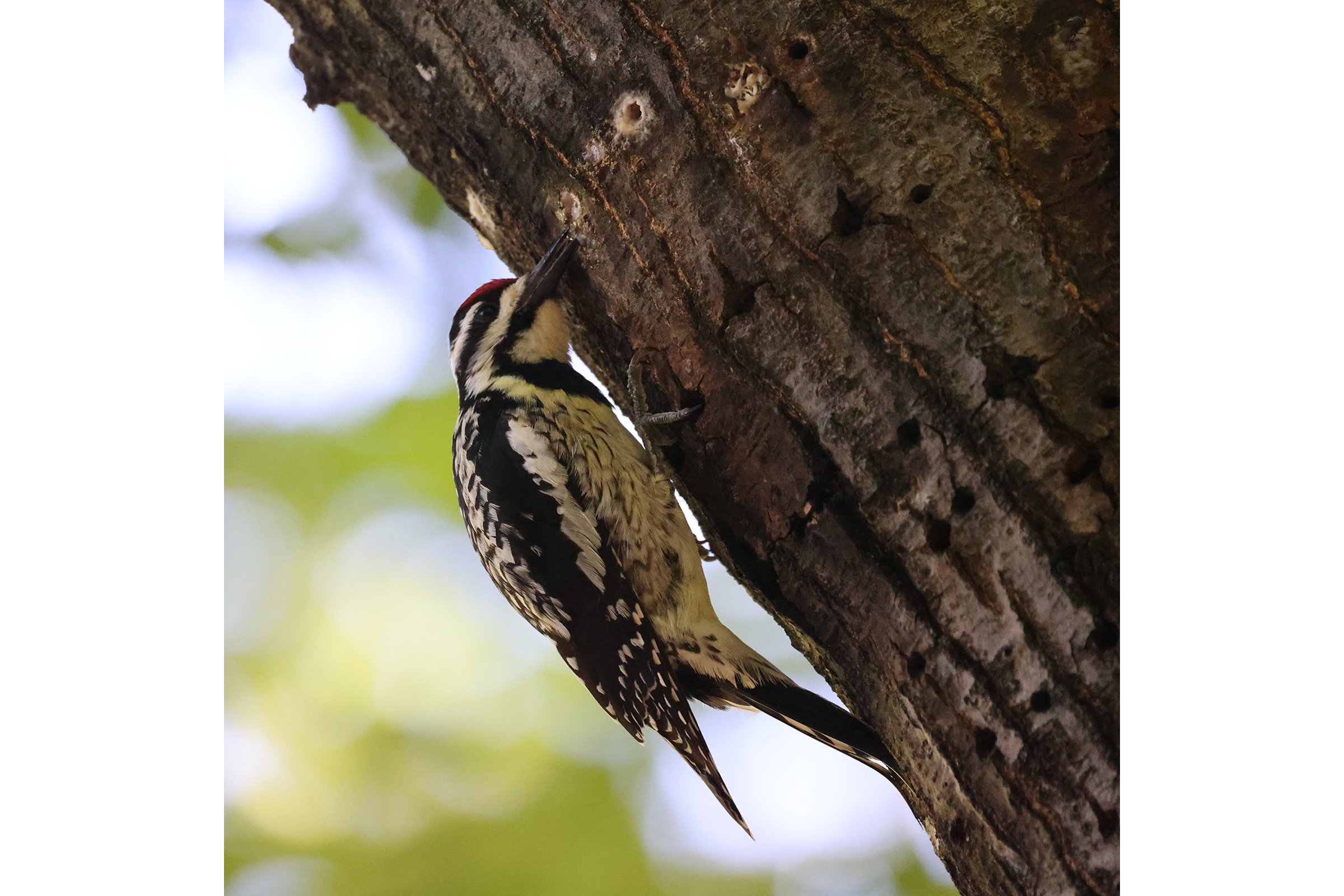Introduction
The Yellow-bellied Sapsucker has one of the cleverest foraging strategies of any bird in Virginia. It drills a ring of sapwells around the girth of a tree and feasts on the insects that are attracted to the sweet sap. While the sapwells do not harm the tree, their presence persists for many years, providing evidence that a Yellow-bellied Sapsucker had visited and perhaps nested in the area (Walters et al. 2020). This species is a rare breeder in Virginia and is primarily found in high-elevation forests within the state (Watts 2015).
Breeding Distribution
Yellow-bellied Sapsuckers are found throughout the Mountains and Valleys region, but they are most likely to occur in Highland County near the West Virginia border (Figure 1). Additionally, it is also more likely to occur in Grayson County in southwestern Virginia, where some of Virginia’s largest areas of high-elevation forest can be found. This geographic pattern is not surprising, as the Yellow-bellied Sapsucker’s known breeding distribution includes only the westernmost reaches Virginia. Accordingly, the likelihood of Yellow-bellied Sapsuckers occurring in a block increases with elevation and the amount of forest edge habitat.
Due to limited number of historic records, Yellow-bellied Sapsucker’s distribution during the First Atlas and its change between the two Atlas periods could not be modeled.
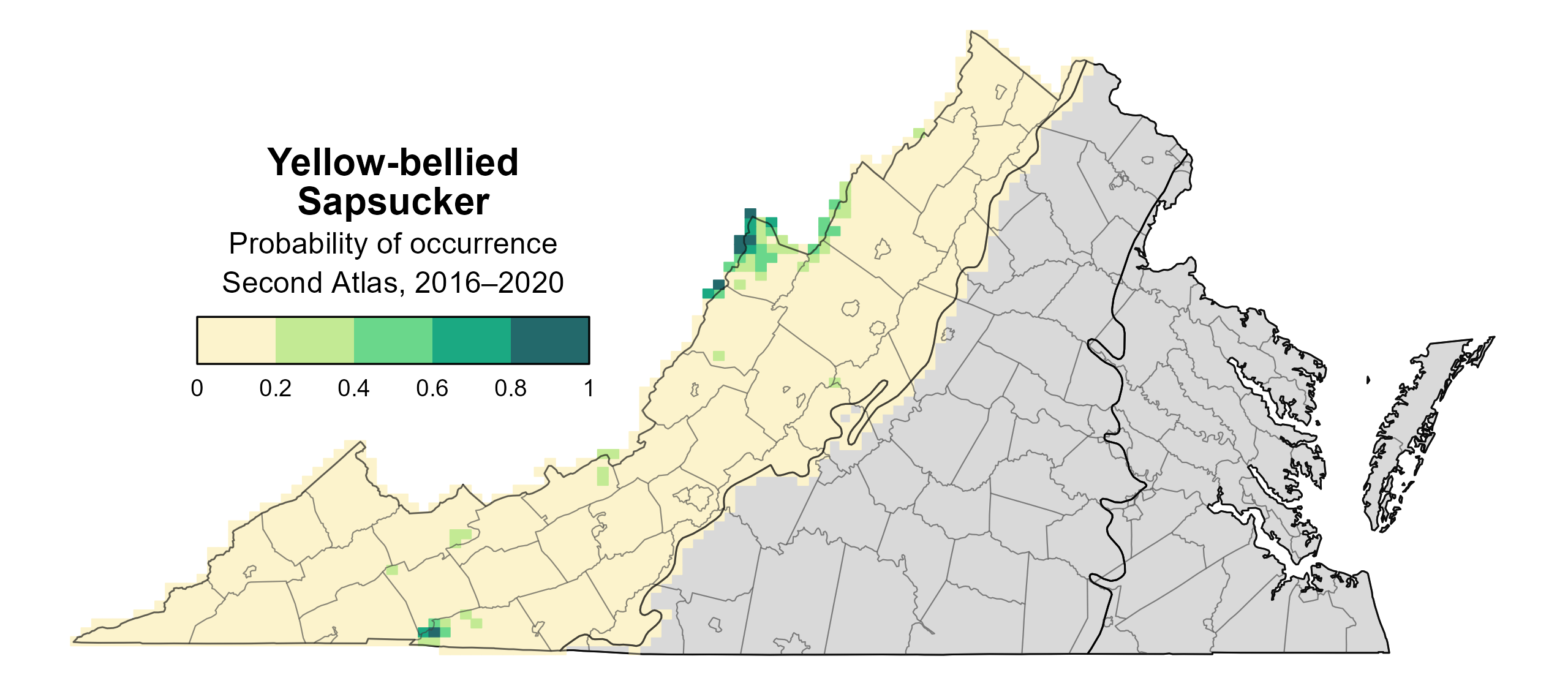
Figure 1: Yellow-bellied Sapsucker breeding distribution based on predicted occurrence (Second Atlas). This map indicates the probability that this species will occur in an Atlas block (an approximately 10 mi2 [26 km2] survey unit) based on environmental (including habitat) factors and after adjusting for the probability of detection (variation in survey effort among blocks). Blocks in gray lie outside the species' core range and were not modeled.
Breeding Evidence
Yellow-bellied Sapsuckers were confirmed breeders in 11 blocks and four counties (Highland, Rockingham, Smyth, and Grayson) and found to be probable breeders in two additional counties (August and Bath) (Figure 2). During the First Atlas, this species was a confirmed breeder in only Highland County (Figure 3).
The earliest confirmed breeding behavior was recorded on June 6 when a nest with young was observed. Breeding was also confirmed through observations of adults carrying food (June 16), recently fledged young (June 23 – July 15), and adults feeding young (June 30) (Figure 4).
For more general information on the breeding habits of this species, please refer to All About Birds.
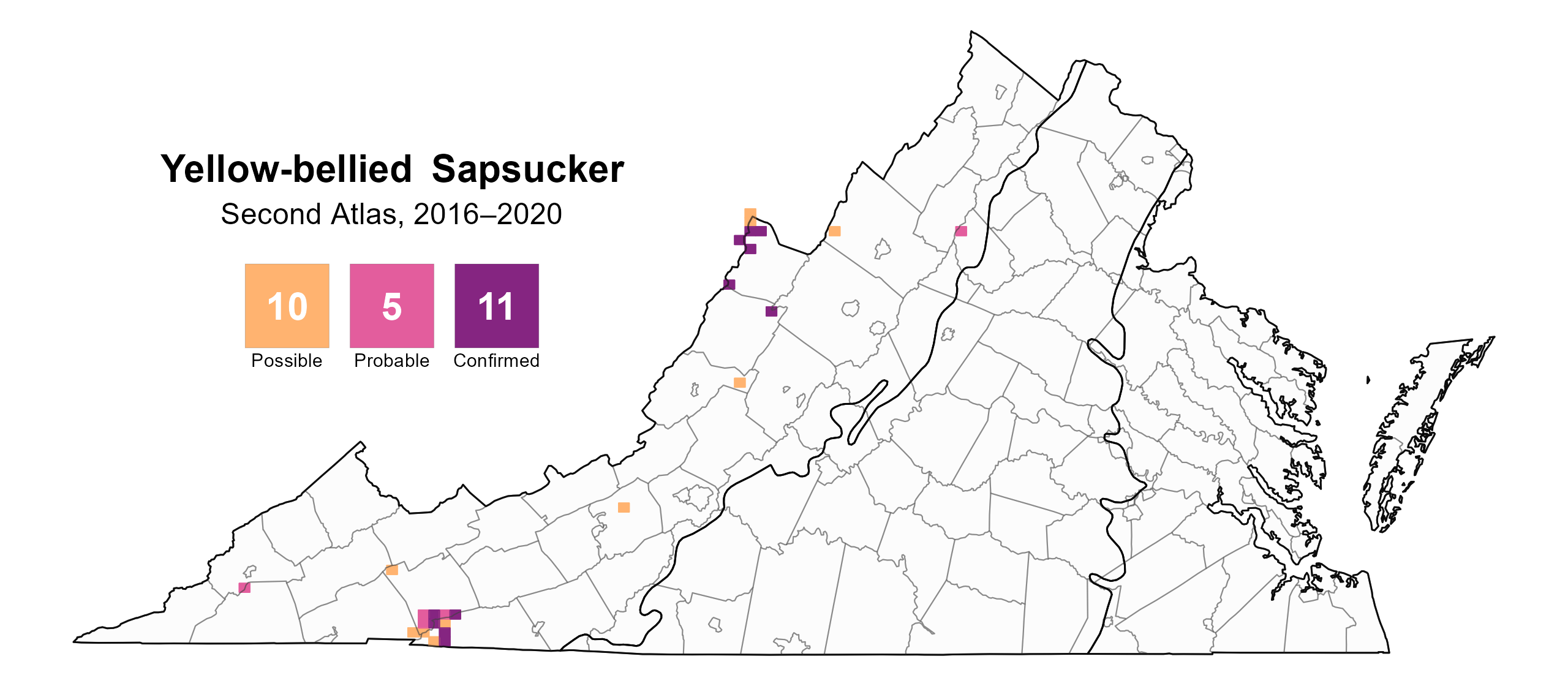
Figure 2: Yellow-bellied Sapsucker breeding observations from the Second Atlas. The colored boxes illustrate Atlas blocks (approximately 10 mi2 [26 km2] survey units) where the species was detected. The colors show the highest breeding category recorded in a block. The numbers within the colors in the legend correspond to the number of blocks with that breeding evidence category.
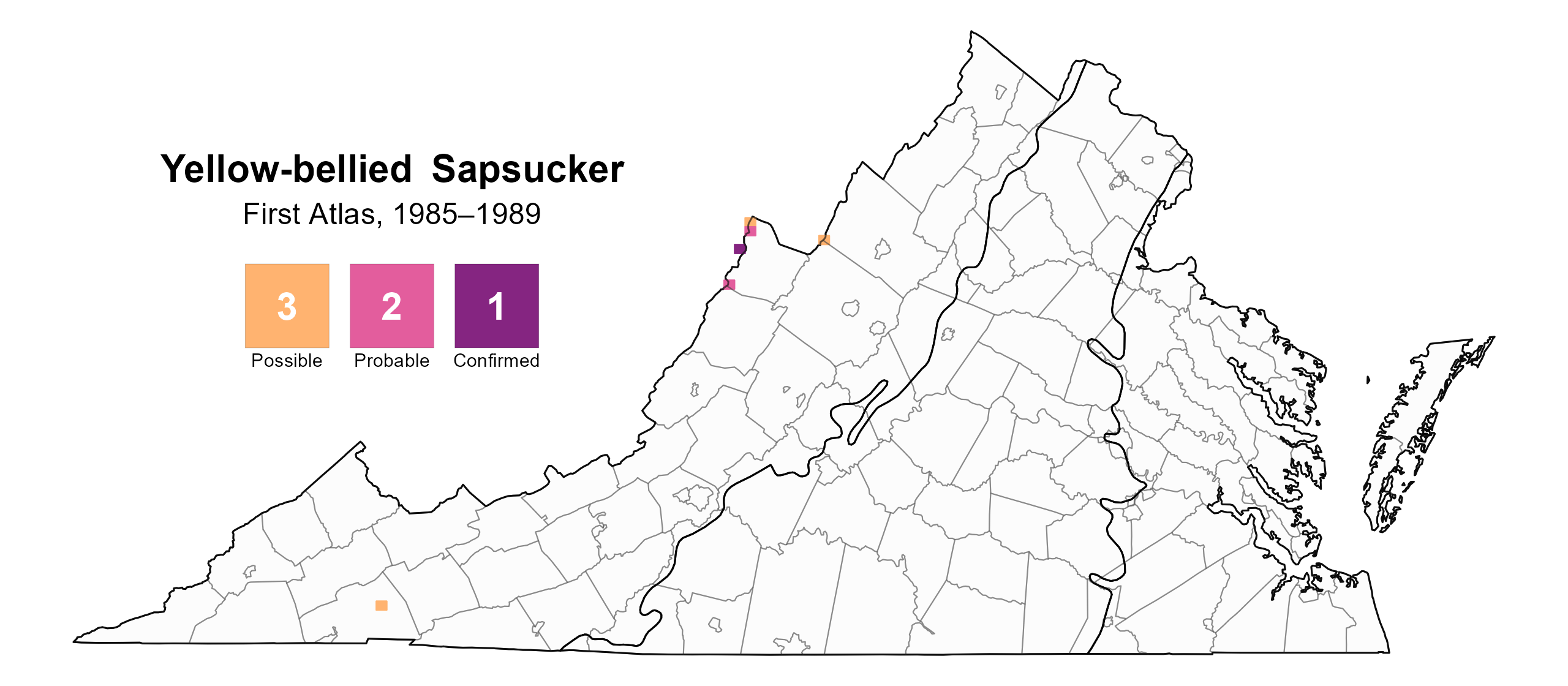
Figure 3: Yellow-bellied Sapsucker breeding observations from the First Atlas. The colored boxes illustrate Atlas blocks (approximately 10 mi2 [26 km2] survey units) where the species was detected. The colors show the highest breeding category recorded in a block. The numbers within the colors in the legend correspond to the number of blocks with that breeding evidence category.
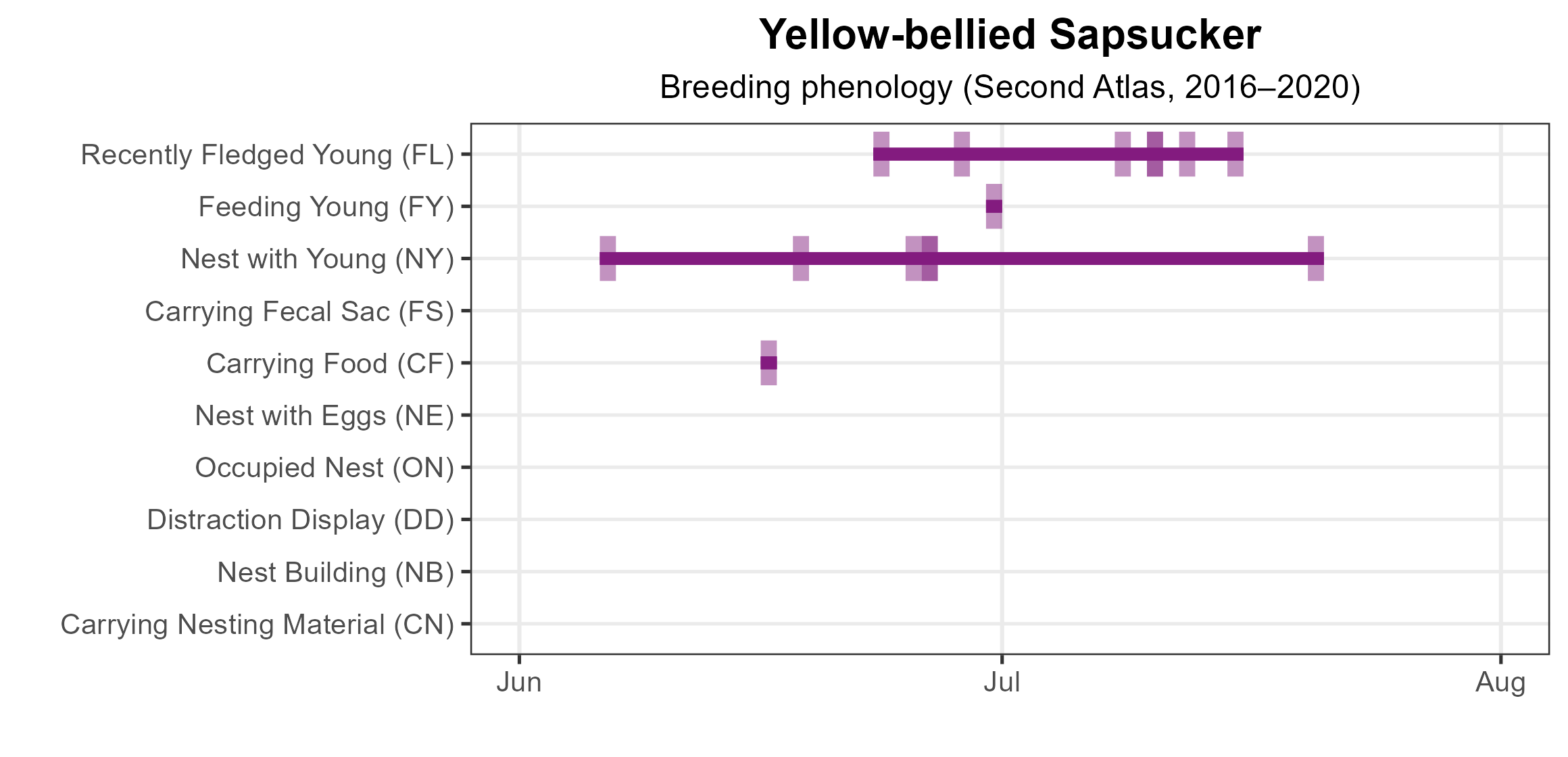
Figure 4: Yellow-bellied Sapsucker phenology: confirmed breeding codes. This graph shows a timeline of confirmed breeding behaviors. Tick marks represent individual observations of the behavior.
Population Status
Limited detections during the point count surveys prevented the development of an abundance model for the Yellow-bellied Sapsucker. There were also too few detections by the North American Breeding Bird Survey (BBS) in Virginia alone to develop a credible population trend for the state. However, population trends for the Appalachian region were credible and showed that the Yellow-bellied Sapsucker increased by a significant 3.99% from 1961–2022, and between Atlas periods, its population in the state increased by a significant 4.78% per year from 1987–2018 (Hostetler et al. 2023; Figure 5).
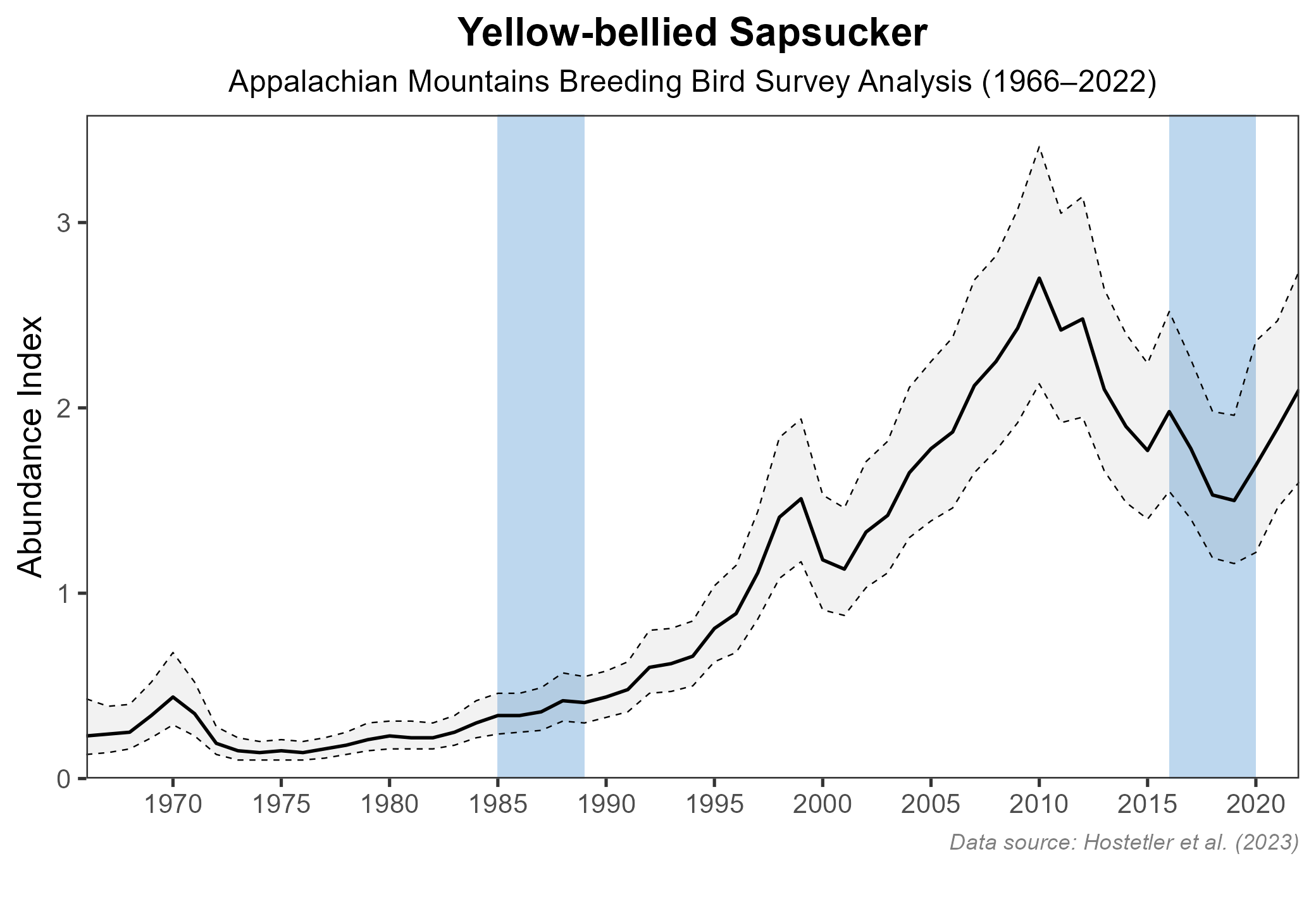
Figure 5: Yellow-bellied Sapsucker population trend for the Appalachian Mountains as estimated by the North American Breeding Bird Survey. The vertical axis shows species abundance; the horizontal axis shows the year. The solid line indicates the estimated population trend; there is a 97.5% probability that the true population trend falls between the dashed lines. The shaded bars indicate the First and Second Atlas periods.
Conservation
In Virginia, the Yellow-bellied Sapsucker population is stable and increasing. Thus, the species is not considered to be a species of conservation concern, and there are no dedicated conservation projects underway (Walters et al. 2020). However, observers are encouraged to continue reporting observations of Yellow-bellied Sapsuckers within the eBird platform, especially during the breeding season. Continued tracking of such species status and distribution will help to ensure effective management in the future.
Interactive Map
The interactive map contains up to six Atlas layers (probability of occurrence for the First and Second Atlases, change in probability of occurrence between Atlases, breeding evidence for the First and Second Atlases, and abundance for the Second Atlas) that can be viewed one at a time. To view an Atlas map layer, mouse over the layer box in the upper left. County lines and physiographic regional boundaries (Mountains and Valleys, Piedmont, and Coastal Plain) can be turned on and off by checking or unchecking the box below the layer box. Within the map window, users can hover on a block to see its value for each layer and pan and zoom to see roads, towns, and other features of interest that are visible beneath a selected layer.
View Interactive Map in Full Screen
References
Hostetler, J. A., J. R. Sauer, J. E. Hines, D. Ziolkowski, and M. Lutmerding (2023). The North American breeding bird survey, analysis results 1966–2022. U.S. Geological Survey, Laurel, MD, USA. https://doi.org/10.5066/P9SC7T11.
Walters, E. L., E. H. Miller, and P. E. Lowther (2020). Yellow-bellied Sapsucker (Sphyrapicus varius), version 1.0. In Birds of the World (A. F. Poole and F. B. Gill, Editors). Cornell Lab of Ornithology, Ithaca, NY, USA. https://doi.org/10.2173/bow.yebsap.01.
Watts, B. D. (2015). Breeding birds of Virginia. Virginia Journal of Science: 66.


